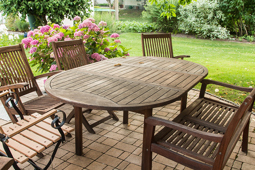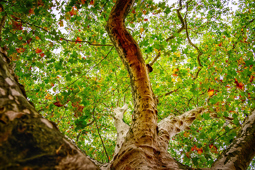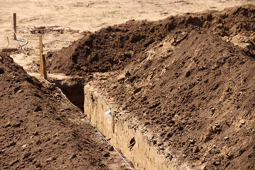
What are the issues for building around trees, bushes and hedges?
Project type
General
Some trees cause no damage to property, especially near modern homes.
However trees, hedgerows and shrubs take moisture from the ground and, in soils such as clay, removal of this moisture can cause significant changes in the volume of the soil resulting in ground movement.
This can then affect foundations and damage the building. To minimise any risk of ground movement, all foundations should be designed either to allow the movement or be taken down to a depth where the likelihood of any damaging movement is low.
In some cases removing a tree or hedge can still cause ground movement as clay can swell because the water demand changes. Check with a structural engineer if you have concerns.
What is subsidence?
Subsidence is where the supporting ground beneath buildings moves or shrinks and the building then settles into a new position with resultant cracking. This can be from things like mining operations, leaking drains and the presence of trees.
Subsidence or shrinkage can affect foundations and damage the building. Cracks will most likely develop near corners and at door and window openings.
What is heave?
When trees are removed, instead of shrinkage the soils can swell because water is no longer being removed by the tree. This causes an increase in size which can heave the building up, and again precautions are necessary to protect the foundations and solid ground floor slabs.
Trees, bushes and hedges on clay soil
Because clay soil is a cohesive (sticky) soil that’s made up of varying percentages of water content, the act of removing water from the ground by trees and plants will cause the volume of the soil to change, shrink and move. The problem isn’t as pronounced if building on sandy or partially clay soil.
Buildings most at risk are those with shallower foundations than those built today; ensuring your foundations are the right depth is key to preventing movement.
Clay soils in different regions carry different risks
Different soils have a different levels of ‘plasticity’ (how much they change volume depending on their water content). The higher the plasticity, the higher the risk of movement either through shrinkage or heave:
- Highest: generally found in the South East of England, stretching up through the East Midlands to the Humber in the North and down to Bath in the West.
- Medium: the rest of the South East, across the Midlands and up beyond the Humber Estuary towards the North East. There are also some isolated areas in the North West of England near the coast.
- Low: The rest of England and Wales - but they still carry some risk.
This British Geological Survey map can help you find out what soil type is in your area or talk to your building control team.
Foundation depths
Use LABC Warranty’s Foundation Depth Calculator to discover how deep your foundations should be to avoid these problems. These depths are based on the plasticity index of the soil, type of tree, the mature height of the tree, its water demand and how far it is away from your building.
Climate
In hot, dry years and in long hot summers the risk of subsidence or soil movement is greater.
Tree and plant types
Some trees’ water demands are greater than others and can therefore cause more soil shrinkage.
Trees that take up a greater amount of water include oak, elm, eucalyptus, hawthorn, poplar, willow and many conifers.
Shrubs like pyracantha and wisteria can cause subsidence if they grow to a sufficient size.
Trees and drains
Tree roots will search for water; in most instances they have a good supply and don’t need to go looking and can extend to the same distance from the trunk as the leaf canopy stretches.
One area often overlooked is their impact on drains. This is a perfect water source for tree roots that can grow into drains that aren’t watertight and have weak joints.
Further information
Useful guidance

Will I need building regulations approval for landscaping?
Read article
Will I need planning permission for landscaping?
Read article
How can a tree preservation order (TPO) order affect my extension project?
Read article


